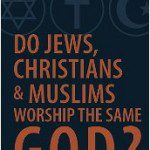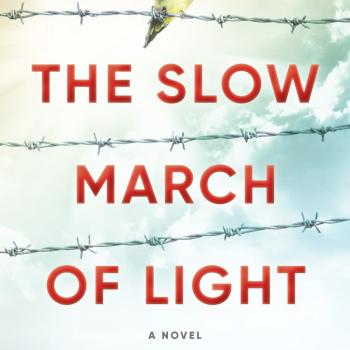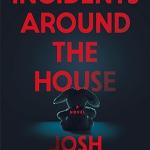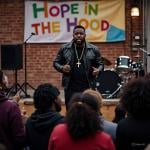 [This is the third in a series of posts on the real Santa Claus by Adam English, author of the new book The Saint Who Would Be Santa Claus, now featured at the Patheos Book Club.]
[This is the third in a series of posts on the real Santa Claus by Adam English, author of the new book The Saint Who Would Be Santa Claus, now featured at the Patheos Book Club.]
From March to April 2002, Israeli military forces carried out “Operation Defensive Shield” in the West Bank, performing a systematic sweep in search of terrorist suspects, anti-Israeli agitators, and guns. As a part of this large-scale operation to root out militants and “stop the terror,” Bethlehem was invaded on April 1, 2002. After an air strike, Israeli tanks surrounded the city in order to enter it the following day.
Approximately two hundred Palestinians fled the advancing Israeli forces. At first they ran toward the Umar, Bethlehem’s local Muslim mosque, but it was bombed. So they turned to the Church of the Nativity across the street.
From the outside, the Church of the Nativity blends in with the rest of the sun-bleached and sand-blasted buildings in the city. But it is one of the oldest continuously operating churches in the world, dating back to the second century. Its basilica was first built on the site traditionally identified as the place of Jesus’ birth, a little cave inlet, in the fourth century and then rebuilt in the 6th century. The church is now administered jointly by Greek Orthodox, Roman Catholic, and Armenian Apostolic authorities. All three traditions maintain monastic communities on the site. In this place of Jesus’ birth we see a model of inter-denominational relationship, three different Christian traditions, Greek, Roman, and Armenian, living side by side, working and worshiping together.
That April of 2002, desperate Palestinians shot down the door of the Church of the Nativity with machine guns and rushed inside for cover. While inside they seized the candelabra and some icons and anything that looked like gold. But, they did no harm to the monks. In fact, the Christian monks shared with the Palestinians what food they had – a brave act of hospitality in the midst of danger and confusion.
Israeli forces immediately surrounded the church and laid siege to it. During the 39 day siege, a church bell-ringer and nine Palestinians were killed by sniper fire and many more wounded. After more than a month of tension, worldwide media coverage, the involvement of the Vatican and the United States government, the standoff ended. Eventually, the two hundred Palestinians made an agreement for surrender and deportation, and exited without a bloodbath.
So much converged upon this scene. “The hopes and fears of all the years are met in thee tonight.” The birth place of the Savior became the dramatic stage for a twenty-first century showdown, complete with tanks and grenades and automatic weapons. A Christian church became the refuge for Muslim Palestinians fleeing from a Jewish army. Jews, Muslims, and Christians were caught in a complicated web of violence and fear on the spot where the Son of God was born as an infant to a young, frightened, newly-wed couple. As we witness the calamities of Middle Eastern enmity and brutality, we are tempted to despair. Is Christ’s message of peace and forgiveness finally drowned out by gun fire, car bombs, and screaming mothers? Does it come down to survival of the fittest, might makes right, salvation by the sword?
Saint Nicholas of Myra says to us, “No.” He left more than an inspirational example of charity and gift-giving because he is also stood for justice and peace. He challenged the authorities in the name of truth, fairness, and life. While bishop of Myra, he halted the execution of three innocent men, he bartered for grain in order to save his town from starvation, and he petitioned the capital for lower taxes for his region. In our own age of violence and selfishness, Nicholas’s example encourages us to stand firm and never give up on peace and justice and life for all. For Nicholas, the Gospel of Christ demanded not only generosity toward one’s neighbor, but social justice, physical protection, and material provision for that same neighbor. The life of Saint Nicholas is in many ways more relevant today than it has ever been.













